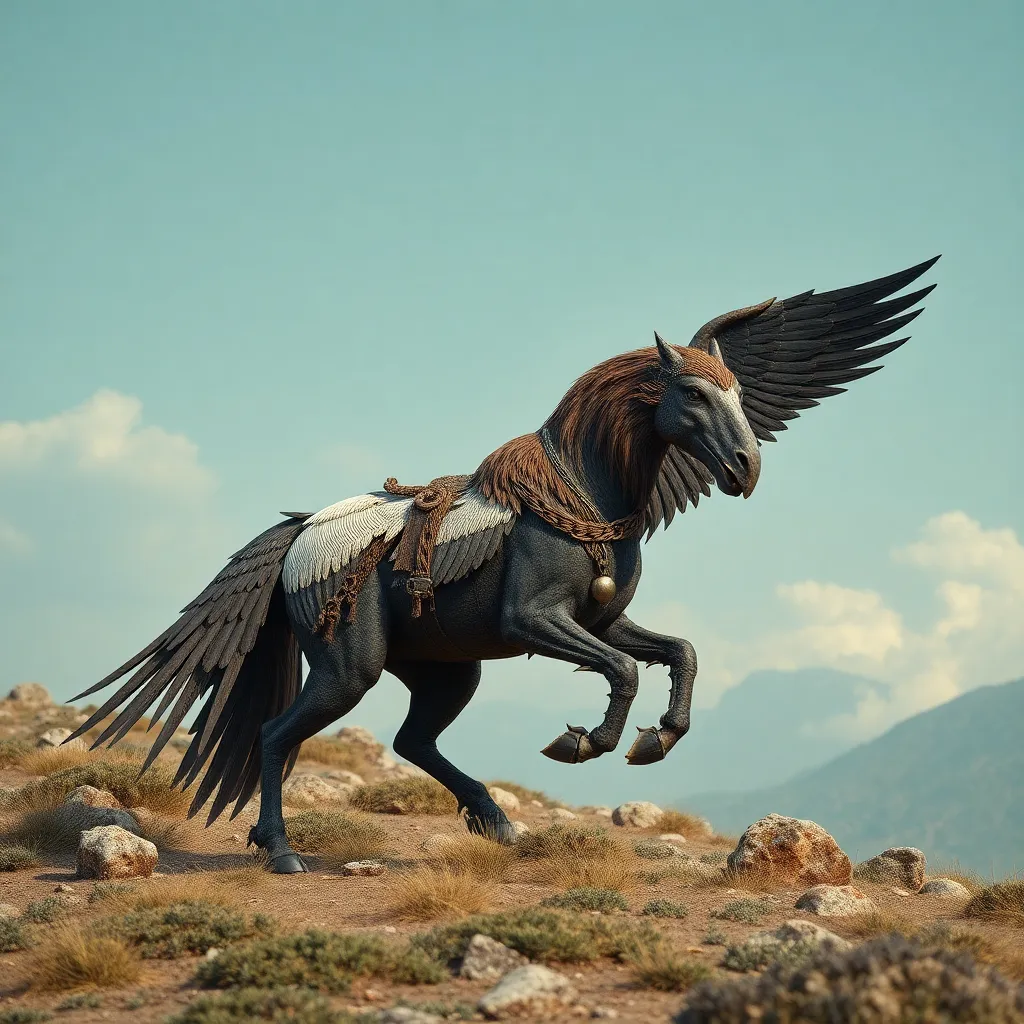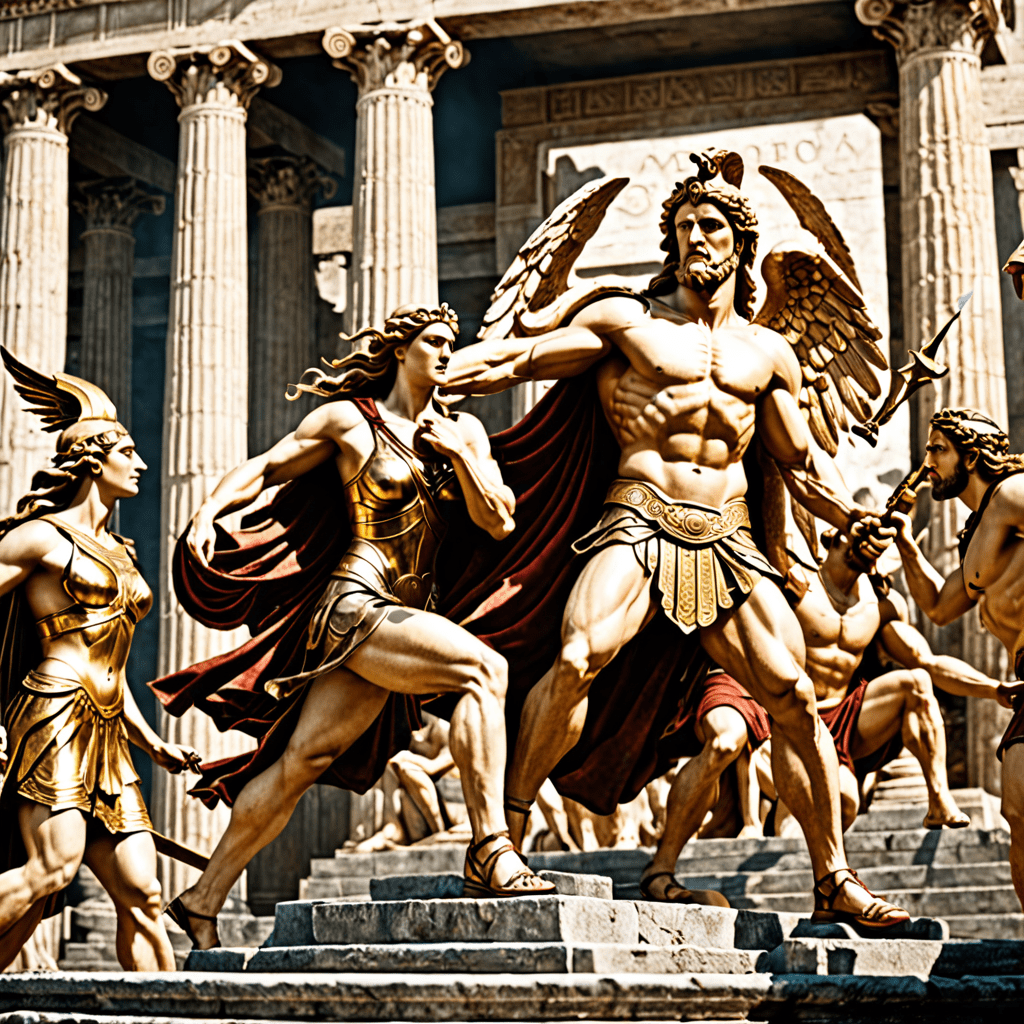From Bird-Men to Horse-Eagles: The Evolution of Roman Hybrid Creatures
I. Introduction to Roman Mythology and Hybrid Creatures
Roman mythology, rich and complex, serves as a reflection of the cultural, social, and spiritual life of ancient Rome. It provides insights into the values and beliefs of a civilization that thrived for centuries. Among the myriad of mythical beings, hybrid creatures play a significant role, representing the blending of different elements to create something unique and powerful.
Hybrid creatures are defined as beings that possess characteristics from two or more different species. In Roman mythology, these figures often symbolize the interplay between human and animal traits, embodying themes of transformation, power, and chaos. This article aims to explore the origins, evolution, and lasting impact of these fascinating beings in Roman culture.
II. The Origins of Hybrid Mythology in Ancient Cultures
Hybrid mythology has roots that can be traced back to various ancient cultures, particularly influenced by Greek mythology. The Romans, inheriting and adapting much from the Greeks, incorporated a plethora of hybrid beings into their own mythos.
- Influences from Greek Mythology: The Greeks introduced many hybrids, such as the centaur and the satyr, which the Romans adopted and modified.
- The Role of Other Ancient Civilizations: Egyptian and Near Eastern mythologies also contributed to the development of hybrids, showcasing the universality of such themes across cultures.
- Early Examples of Hybrid Creatures: Early Roman texts and artifacts depict various hybrids, setting the stage for more complex narratives in later mythology.
III. Bird-Men: The Enigmatic Avian Hybrids
Among the most intriguing hybrids in Roman lore are the bird-men, often depicted as beings with human bodies and avian features. These figures serve as symbols of freedom, transcendence, and the connection between the earthly and the divine.
- Description and Symbolism: Bird-men are characterized by their wings and feathers, representing the aspiration to reach higher realms and the connection to the divine.
- Prominent Figures and Their Stories: Figures like the harpies, often portrayed as winged spirits, embody the duality of beauty and terror, serving both as messengers and omens.
- Cultural and Religious Significance: Bird-men were often associated with various deities and were believed to carry prayers to the gods, emphasizing their role in the spiritual landscape of Rome.
IV. The Rise of Equine Hybrids: Centaurs and Beyond
The centaur, a creature with the upper body of a human and the lower body of a horse, is one of the most celebrated hybrids in Roman mythology. This figure encapsulates the duality of civilization and wildness, reason and instinct.
- Overview of Centaurs in Mythology: Centaurs are often depicted as embodying both noble and savage traits, reflecting the complexities of human nature.
- Other Notable Horse Hybrids: Beyond centaurs, other hybrids, such as the hippocampus (a horse with a fish tail), illustrate the diversity of equine creatures in Roman tales.
- The Symbolic Meaning of Horse-Eagles: Horse-eagles, or griffins, combine the majesty of horses and the power of eagles, symbolizing strength, vigilance, and protection.
V. The Role of Hybrid Creatures in Roman Society
Hybrid creatures were not merely products of imagination; they played a significant role in the art, literature, and religious practices of Roman society.
- Use of Hybrids in Art and Literature: Artists often depicted hybrids in frescoes, sculptures, and pottery, while writers infused their stories with these captivating beings to explore themes of identity and morality.
- Significance in Religious Rituals and Practices: Hybrids were often invoked in rituals, representing the mediation between humans and the divine, and serving as protectors in various religious ceremonies.
- Hybrids as Symbols of Power and Chaos: The unpredictable nature of hybrids often made them symbols of chaos, reflecting the tensions within Roman society and the uncertainties of life.
VI. The Evolution of Hybrid Creatures through Time
As the Roman Republic transitioned into the Empire, the representation and significance of hybrid creatures evolved, reflecting the changing dynamics of society.
- Changes in Hybrid Representations: Early representations were often more fearsome, while later depictions became more nuanced, emphasizing the complexities of character.
- Influence of Historical Events: Major events, such as wars and conquests, influenced the portrayal of hybrids, often reflecting the anxieties and aspirations of the time.
- The Blending of Cultures: The incorporation of elements from conquered cultures enriched Roman hybrid mythology, leading to a diverse and intricate pantheon.
VII. The Legacy of Roman Hybrid Creatures in Modern Culture
The fascination with hybrid creatures has persisted through the ages, influencing contemporary literature, art, and media.
- Impact on Contemporary Literature and Media: Modern fantasy genres often draw upon Roman hybrid mythology, reimagining these beings in new contexts and narratives.
- Hybrid Creatures in Modern Art and Symbolism: Artists continue to explore the themes of hybridity, utilizing these figures to comment on identity, transformation, and the human experience.
- Ongoing Fascination with Mythology and Hybrids: The allure of hybrids speaks to a universal human desire to explore the boundaries of nature and the possibilities of transformation.
VIII. Conclusion: The Enduring Allure of Roman Hybrids
In summary, the exploration of Roman hybrid creatures reveals their profound significance in understanding the complexities of Roman culture. From the enigmatic bird-men to the legendary centaurs, these beings embody the interplay of human and animal traits, reflecting the values, fears, and aspirations of a civilization.
The legacy of these hybrids continues to resonate in modern culture, reminding us of the enduring power of mythology to inspire and provoke thought. As we engage with these ancient narratives, we gain insights not only into the past but also into our collective imagination and identity today.



